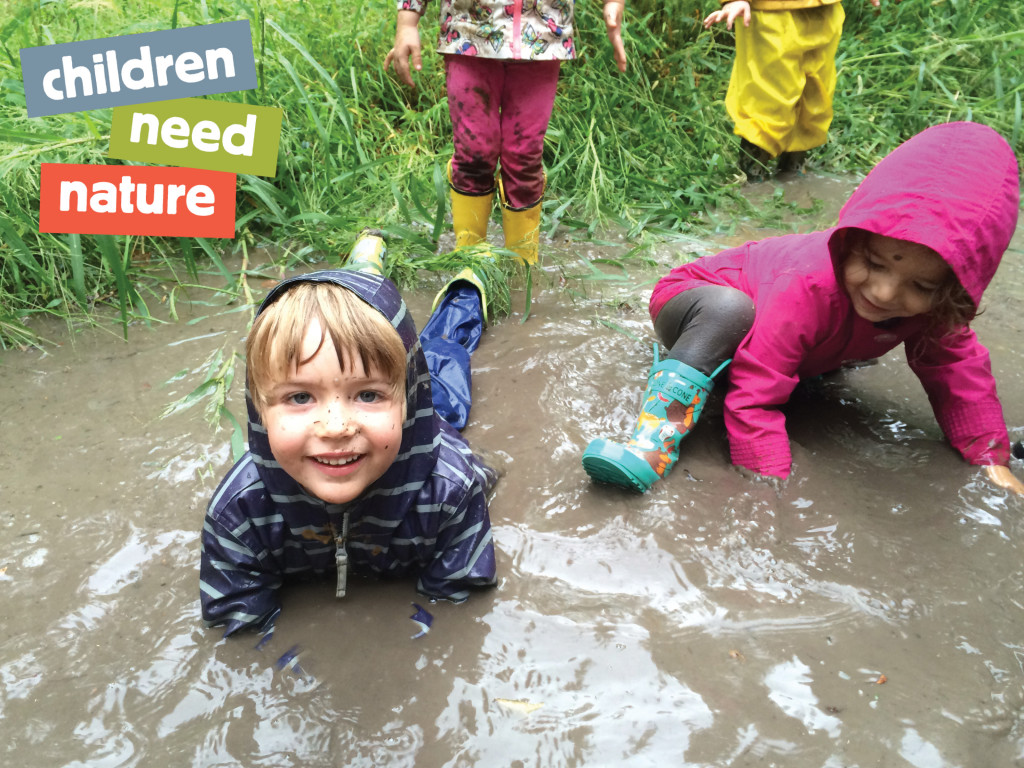Children Need Nature is a monthly blog column from our Nature Preschool program. Read more posts here.
Activity: Rainy Day Hike
You will need:
Rain gear
- Raincoat
- Umbrella
- Hat
- Rain boots
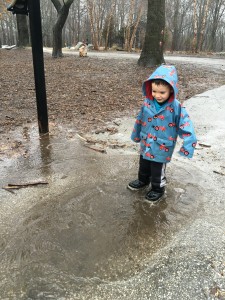 What to do:
What to do:
- On a rainy day (either during or after the rain stops), go outside and take a walk around your neighborhood. Follow the path of rainwater from your roof, your doorstep, or the sidewalk in front of your house. Where does it lead?
- Is the water carrying anything with it? Where do you think these objects end up?
- Notice areas where the water puddles. Why do puddles form in some places but not others?
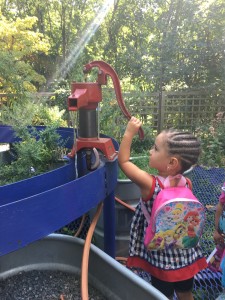 Optional step: See how big of a splash you can make!
Optional step: See how big of a splash you can make! - If you follow the water to the end of your street, you might see it flow into a storm drain. Where do you think the water goes after that?
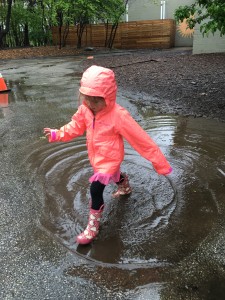 Discuss with your child:
Discuss with your child:
- Neighborhoods have lots of structures that are designed to control where water flows. Examples include roof gutters and downspouts that carry the water from your roof to the ground, and curb gutters that direct water to flow near the curb instead of down the middle of the street. What would a rainy day in your neighborhood look like without these structures?
- Depending
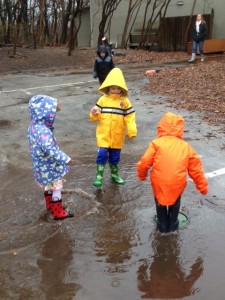 on where you live, rainwater may be carried in a combined sewer, where it travels in the same pipes as wastewater (i.e., sewage) from homes. Combined sewer pipes lead to the wastewater treatment plant, where the water is cleaned before being put back into the river. In some areas, rainwater is carried in a separate sewer, which does not carry wastewater and leads directly to the river without being cleaned. What happens when things like trash, oil, and leaves get in the storm drain? How can we prevent that from happening?
on where you live, rainwater may be carried in a combined sewer, where it travels in the same pipes as wastewater (i.e., sewage) from homes. Combined sewer pipes lead to the wastewater treatment plant, where the water is cleaned before being put back into the river. In some areas, rainwater is carried in a separate sewer, which does not carry wastewater and leads directly to the river without being cleaned. What happens when things like trash, oil, and leaves get in the storm drain? How can we prevent that from happening?
Extended learning:
- On a dry day, go outside with a bottle of water. Choose a spot in the grass to slowly pour out about half of the water. Where does the water go? Pour the other half out on the sidewalk. Where does the water go this time? Why is it different? How is a rainstorm in the forest different from a rainstorm in the city, where there are lot of streets, sidewalks, and parking lots?
- Visit the Philadelphia Water Department’s website at phillywatersheds.org to learn more about stormwater, sewers, and how you can help prevent stormwater pollution in your neighborhood.

